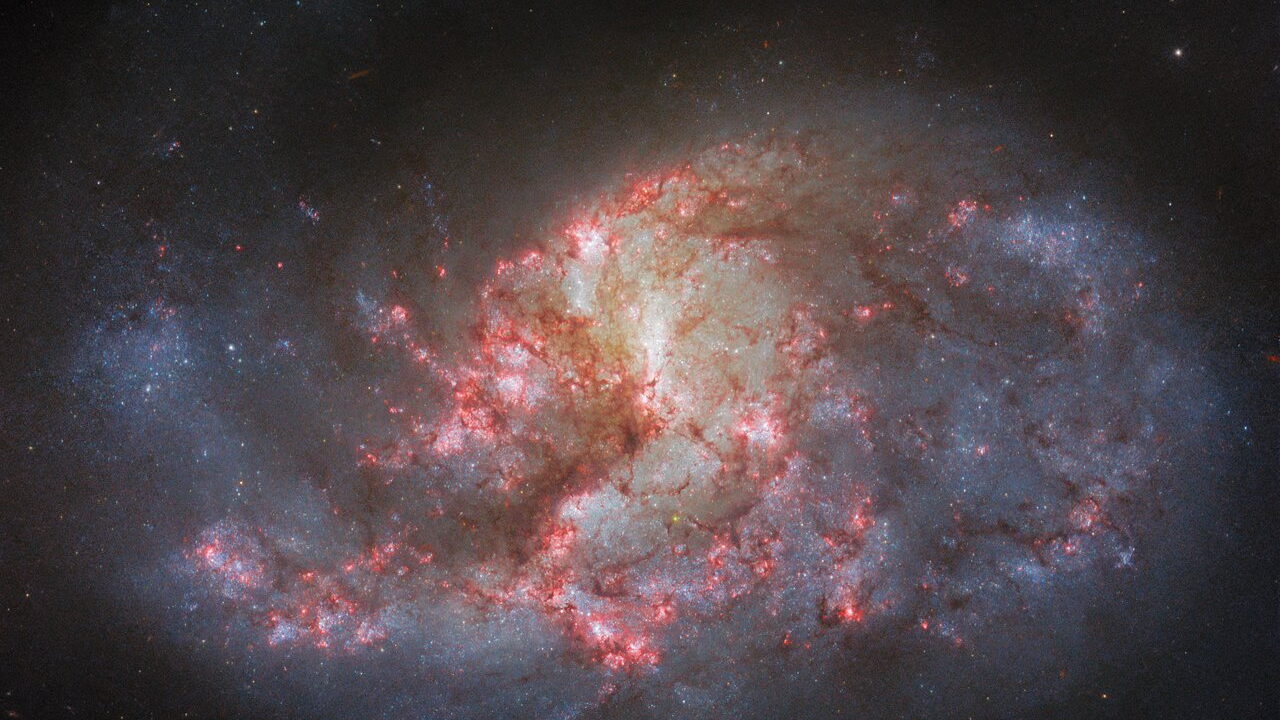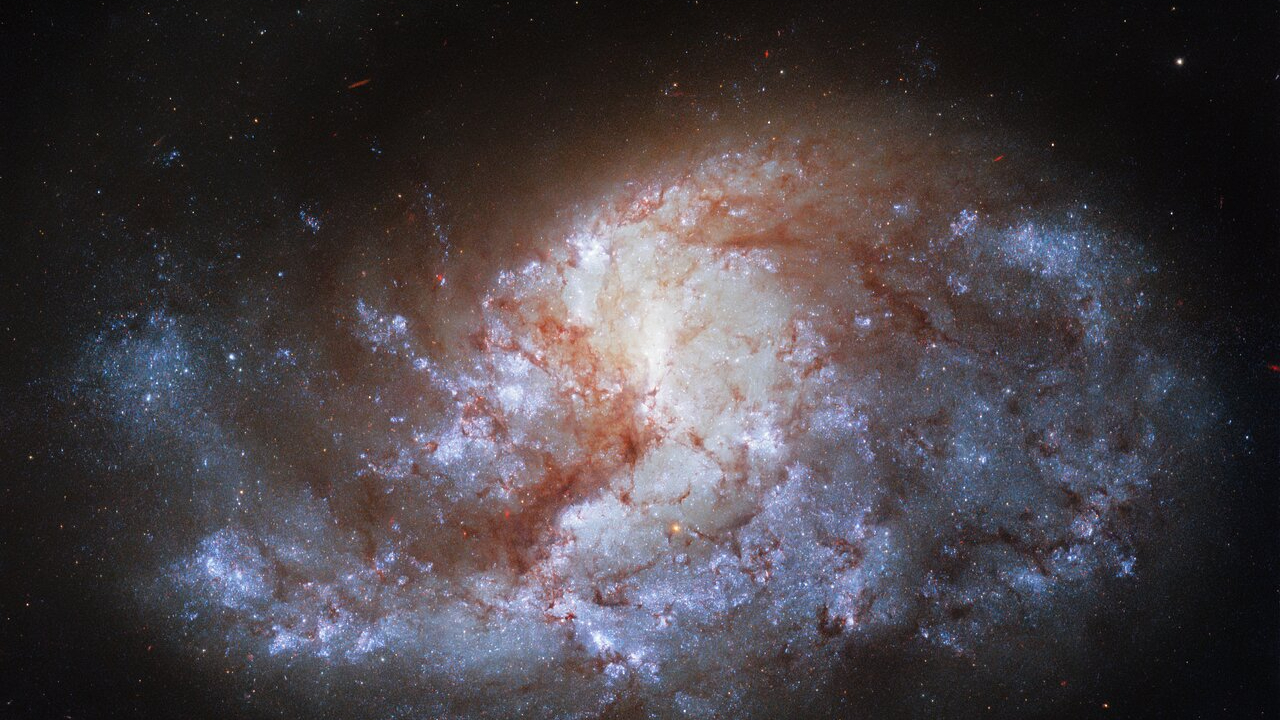
The Hubble Space Telescope has captured a striking new view of a distant spiral galaxy whose star-studded arms are all tangled up.
Located about 30 million light-years from Earth, NGC 1385 is a barred spiral galaxy with several arms that are mixed together, creating an oval appearance. The galaxy's core glows brightly with an active, growing black hole that feeds on neighboring, densely packed star clusters.
This is not the first time NGC 1385 has been the focus of the famous space telescope. Hubble photographed the galaxy a few years back, using different filters. The more recent photo, which the European Space Agency (ESA) shared on Nov. 13, captures more pinkish-red and umber shades, whereas the former image, shared on Aug. 16, 2021, was dominated by cool blues. Both images show dark filaments of dust woven through the galaxy.
Related: The best Hubble Space Telescope images of all time!

"It is understandable to be a bit confused as to how the same galaxy, imaged twice by the same telescope, could be represented so differently in two different images," ESA officials said in a Nov. 13 statement. "The reason is that — like all powerful telescopes used by professional astronomers for scientific research — Hubble is equipped with a range of filters."
Hubble uses both infrared and ultraviolet filters. Infrared light is represented in red, while blue areas correspond to ultraviolet light. Using images taken with different filters, the Hubble team is able to discern how to properly color an image and reveal finite details that may otherwise be unnoticeable.
"These highly specialized components have little similarity to filters used on social media: those software-powered filters are added after the image has been taken, and cause information to be lost from the image as certain colors are exaggerated or reduced for aesthetic effect," ESA officials said. "In contrast, telescope filters are pieces of physical hardware that only allow very specific wavelengths of light to enter the telescope as the data are being collected."
Using extra filters, the recent Hubble view captures more detailed features of NGC 1385, including its distinct central bar-shaped structure and the swirling path of its tangled spiral arms. The differences observed in the two images highlight the importance of Hubble's versatile filters.
"Astronomers can probe extremely specific parts of the electromagnetic spectrum," ESA officials said. "This is very useful for a number of reasons; for example, physical processes within certain elements emit light at very specific wavelengths, and filters can be optimized to these wavelengths."
Located in the constellation Fornax — which is Latin for "furnace" — NGC 1385 has been aptly nicknamed the Heart of the Furnace, as bright pink patches and filaments of dark red dust stem across the galaxy's glowing core like arteries of the heart.







